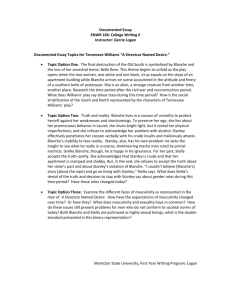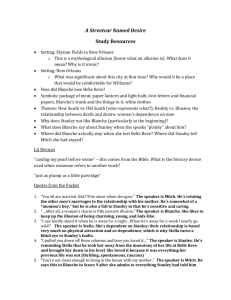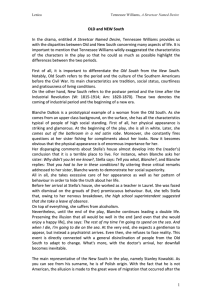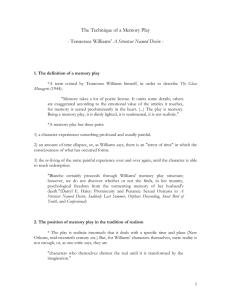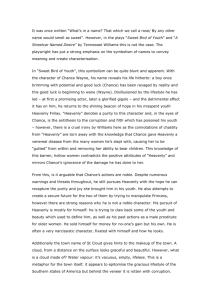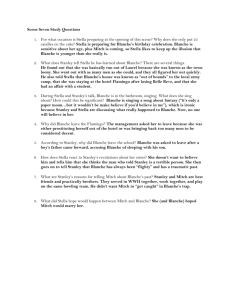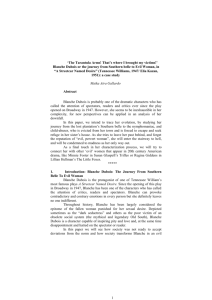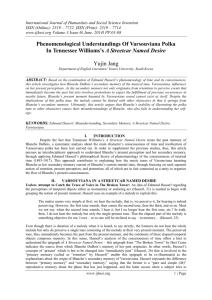A Streetcar Named Desire
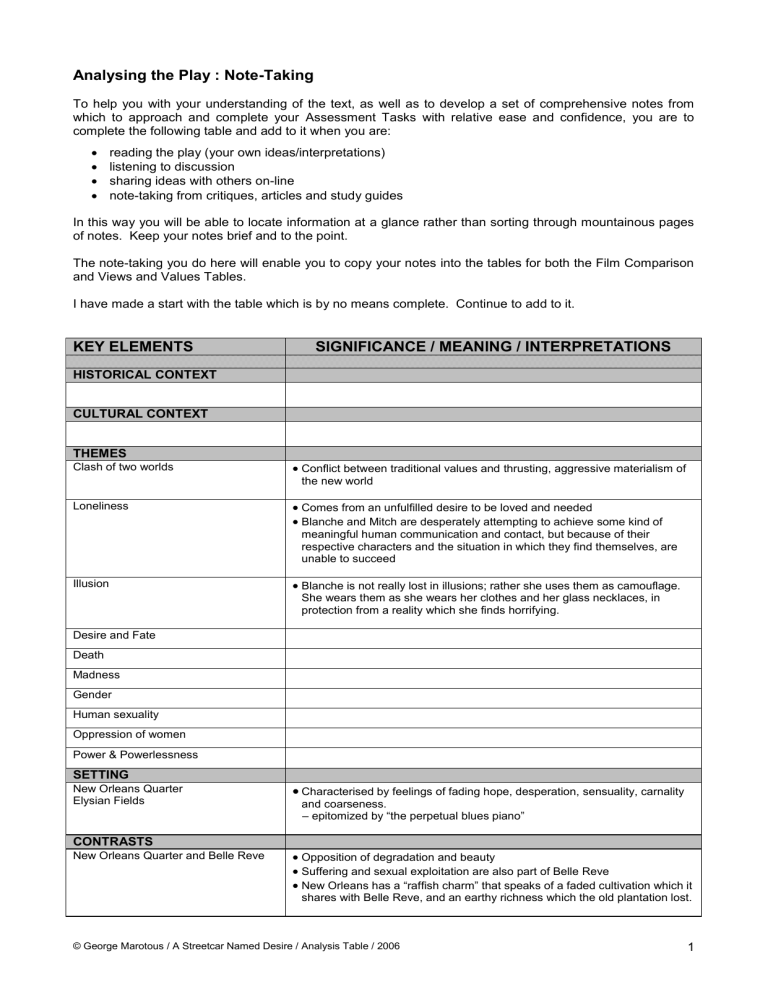
Analysing the Play : Note-Taking
To help you with your understanding of the text, as well as to develop a set of comprehensive notes from which to approach and complete your Assessment Tasks with relative ease and confidence, you are to complete the following table and add to it when you are:
reading the play (your own ideas/interpretations)
listening to discussion
sharing ideas with others on-line
note-taking from critiques, articles and study guides
In this way you will be able to locate information at a glance rather than sorting through mountainous pages of notes. Keep your notes brief and to the point.
The note-taking you do here will enable you to copy your notes into the tables for both the Film Comparison and Views and Values Tables.
I have made a start with the table which is by no means complete. Continue to add to it.
SIGNIFICANCE / MEANING / INTERPRETATIONS KEY ELEMENTS
HISTORICAL CONTEXT
CULTURAL CONTEXT
THEMES
Clash of two worlds
Loneliness
Illusion
Desire and Fate
Death
Madness
Gender
Human sexuality
Oppression of women
Power & Powerlessness
SETTING
New Orleans Quarter
Elysian Fields
CONTRASTS
New Orleans Quarter and Belle Reve
Conflict between traditional values and thrusting, aggressive materialism of the new world
Comes from an unfulfilled desire to be loved and needed
Blanche and Mitch are desperately attempting to achieve some kind of meaningful human communication and contact, but because of their respective characters and the situation in which they find themselves, are unable to succeed
Blanche is not really lost in illusions; rather she uses them as camouflage.
She wears them as she wears her clothes and her glass necklaces, in protection from a reality which she finds horrifying.
Characterised by feelings of fading hope, desperation, sensuality, carnality and coarseness.
– epitomized by “the perpetual blues piano”
Opposition of degradation and beauty
Suffering and sexual exploitation are also part of Belle Reve
New Orleans has a “raffish charm” that speaks of a faded cultivation which it shares with Belle Reve, and an earthy richness which the old plantation lost.
© George Marotous / A Streetcar Named Desire / Analysis Table / 2006
1
DuBois and Kowalski
Colours
Zodiac signs
STAGE EFFECTS
Music
Sound Effects
SYMBOLISM & IMAGERY
Desire and Cemeteries
Elysian Fields
Belle Reve
Locomotive
“Blues piano”
“Varsouviana” polka
Light
The paper lantern
“Flores, flores para los muertos”
Distorted shapes and jungle cries
Spilt coke
Baths
Shep Huntleigh
Diversity in backgrounds e.g. refined and coarse
Stanley needs vividness to prove his phys ical manhood. He is presented “as coarse and direct and power ful as the primary colours.” His green and scarlet bowling-shirt is an example.
Blanche shuns loud shades and selects pastels or white. The directness of bright colours repulses her; she prefers muted, muffled tones.
Stanley was born in December under Capricorn the Goat. This brings to mind many obvious associations in connection with Stanley’s personality.
Blanche’s sign is Virgo, the virgin. True, she is a very degenerate “virgin,” but in body only. She tries to keep the mentality of a virgin. She believes she is a virgin because the men she has slept with have meant nothing to her; they have not actually taken from her. She has not given of her real self to them.
Music marks a change of atmosphere, conveys a menace, underlines a tragic development:
- the “blues piano” in particular can signal a variety of messages;
- the “Varsouviana” polka is specifically linked with the suicide of
Blanche’s husband and is heard by her only when she remembers him.
the blues piano representing the spirit of the rundown quarter,
the polka for Blanche’s guilty memories of her husband, harsh discords for the rape and for Blanche’s removal to the mental hospital.
Beautiful Dream
The remaining symbol of a life and tradition that Blanche knows in her heart have vanished, yet to which she clings with a desperate tenacity.
A symbol of the callous vitality of the Vieux Carré of New Orleans, representing the spirit of the rundown quarter
Represents the tragedy in Blanche’s past - her guilty memories of her husband
In Scene 11 the polka is “filtered into weird distortion” in Blanche’s mind.
The “harsh discords” signalling that the sad memories of the past are about to give way to a cruel institutionalised future.
Symbols of human cruelty (Scenes 10 and 11) - grotesque menacing shapes, jungle noises and distorted music are employed to reflect Blanche’s terror.
Recalling the blood spilt by her husband’s suicide.
© George Marotous / A Streetcar Named Desire / Analysis Table / 2006
2
